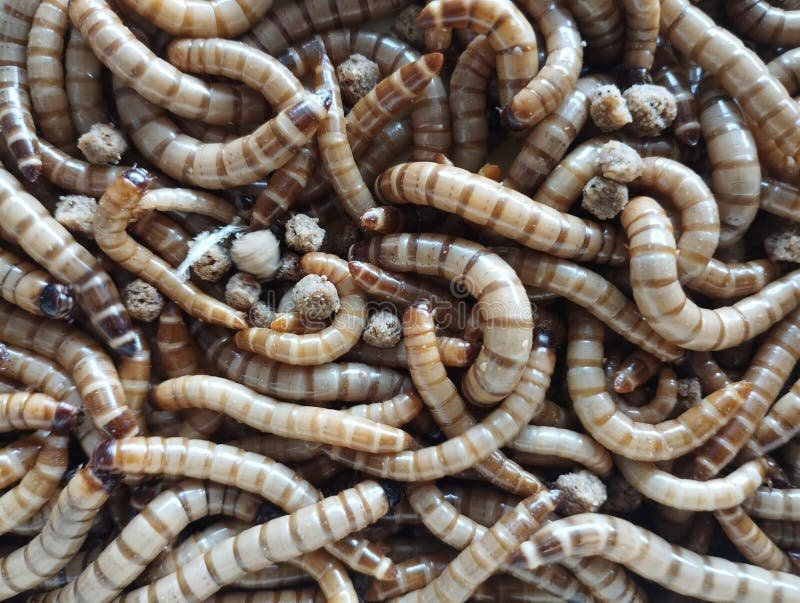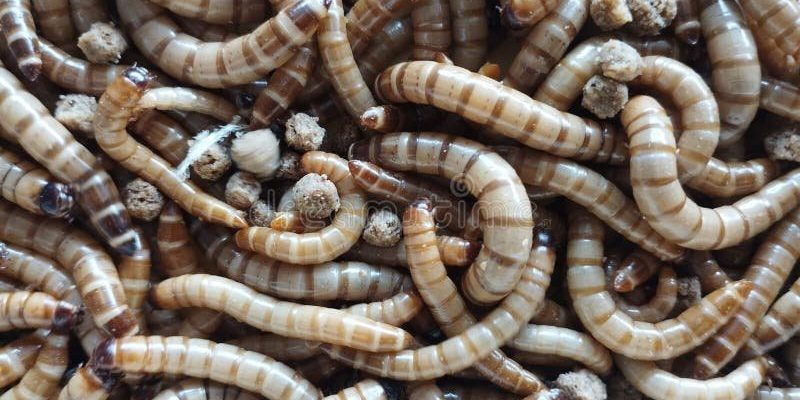
Now, you might be wondering why you should care about these pesky larvae. Well, if you’re dealing with rodents—whether in your garden, barn, or anywhere else—you need to understand this issue. Just like a remote control that isn’t working right can make your favorite show unwatchable, these larvae can disrupt the health and stability of rodent populations. So, let’s break it down, shall we?
What Are Wolf Worm Larvae?
Wolf worm larvae, often called cutaneous myiasis larvae, are the immature stage of certain fly species. This stage can infest various animals, including rodents. They like to burrow into the skin of their host, leading to discomfort and possibly serious infections.
To visualize this, think of wolf worm larvae as unwanted houseguests who overstay their welcome. They enter the rodent’s body through a small wound or break in the skin, and from there, they start living and feeding. As they grow, they can cause significant damage to the host’s body, leading to infection or even death if left untreated.
These larvae are more common in warm, humid areas, making them a particular nuisance in certain climates. Understanding their biology is essential for dealing with them effectively.
How Do Wolf Worm Larvae Affect Rodents?
The effects of wolf worm larvae on rodent health can be quite serious. When they burrow under the skin, they cause irritation and inflammation. This can lead to painful sores and even secondary infections if the rodent’s immune system can’t keep up.
Here’s the thing: a rodent in distress won’t just stay in one place. They may become more aggressive, more visible, and even more prone to predator attacks. If you have a rodent colony nearby, you might notice increased activity, which can be alarming. Imagine having a party at your place, but instead of fun music, there’s only chaos and discomfort.
In addition to health consequences for the rodents, infestations can impact local ecosystems. Rodent colonies play a vital role in their environment, affecting plant growth and serving as food for predators. When wolf worm larvae get involved, it can throw this delicate balance out of whack.
Identifying Wolf Worm Infestations
So, how do you know if your rodent population is dealing with a wolf worm infestation? There are a few telltale signs to look for.
- Visible Wounds: Look for sores or wounds on the skin of rodents. These may appear swollen or inflamed.
- Behavioral Changes: Notice if the rodents are acting unusually agitated or if they seem to be scratching or grooming excessively.
- Decrease in Population: If you notice a sudden drop in the rodent population, it could be due to larvae infestations.
If you suspect a problem, it’s important to act fast. The sooner you recognize the issue, the quicker you can help your rodent friends—or manage your rodent problem effectively.
Preventing Wolf Worm Infestations
Prevention is always better than cure, right? Keeping wolf worm larvae at bay starts with understanding their environment and making it less inviting for them. Here are some handy tips for prevention:
- Maintain Cleanliness: Regularly clean areas where rodents live, especially if you’re managing a barn or garden. Removing waste and food sources can reduce their attraction.
- Wound Care: If you’re caring for rodents, be attentive to any wounds they might have. Treating these early can prevent larvae from getting in.
- Environmental Controls: Keep living areas dry and well-ventilated, which can help discourage fly activity.
By taking simple steps, you can create an environment that’s less hospitable to these unwelcome guests.
Controlling Existing Infestations
If you find that wolf worm larvae have already invaded a rodent colony, it’s time to take action. Here are some effective strategies to control these infestations:
- Manual Removal: If possible, carefully remove the larvae from affected rodents. This requires caution, as improper handling can harm the animal.
- Topical Treatments: Consider using insecticidal creams or ointments designed for animal use. These can help kill the larvae and prevent further irritation.
- Veterinary Consultation: For serious infestations, consulting a vet can be crucial. They can recommend proper medications or treatments that are safe and effective.
When dealing with infestations, patience is key. It may take time to see results, but a proactive approach will make a difference.
Natural Remedies and Alternatives
Looking for more natural ways to tackle wolf worm larvae? There are a few holistic approaches you can consider.
- Essential Oils: Some essential oils, like tea tree or lavender oil, may help deter flies. Diluting these oils and applying them around living areas can create a less inviting environment.
- Herbal Infusions: Planting herbs like mint or rosemary nearby can deter pests naturally. These plants have compounds that flies find unappealing.
- Traps: Using sticky traps can help capture adult flies before they lay eggs. Place these traps near rodent habitats to limit new infestations.
Remember, while natural remedies can be effective, they often work best in conjunction with other methods.
The Importance of Regular Monitoring
After dealing with an infestation, it’s crucial to keep an eye on rodent populations going forward. Regular monitoring can help you catch any new issues before they escalate.
Set aside time each week to check for signs of new infestations, such as wounds or behavioral changes. Establishing a consistent monitoring routine can save you from larger headaches down the road.
Here’s the thing: this is about more than just keeping your rodent population healthy. It’s about maintaining balance in the ecosystem. Rodents play key roles in their habitats, and by taking care of them, you’re contributing to a healthier, happier environment.
Wolf worm larvae can create significant challenges for rodent colonies, affecting their health and behavior in ways that ripple through the ecosystem. Understanding how to identify, prevent, and manage these infestations is essential for anyone dealing with rodent populations. By keeping your environment clean, monitoring rodent health, and using both chemical and natural controls when necessary, you can help keep these little creatures safe and thriving.
So, whether you’re a farmer, a pet owner, or just someone who cares about wildlife, staying informed about wolf worm larvae could make all the difference. Remember, prevention is key—and with the right tools and knowledge, you can ensure a healthier environment for everyone involved.

